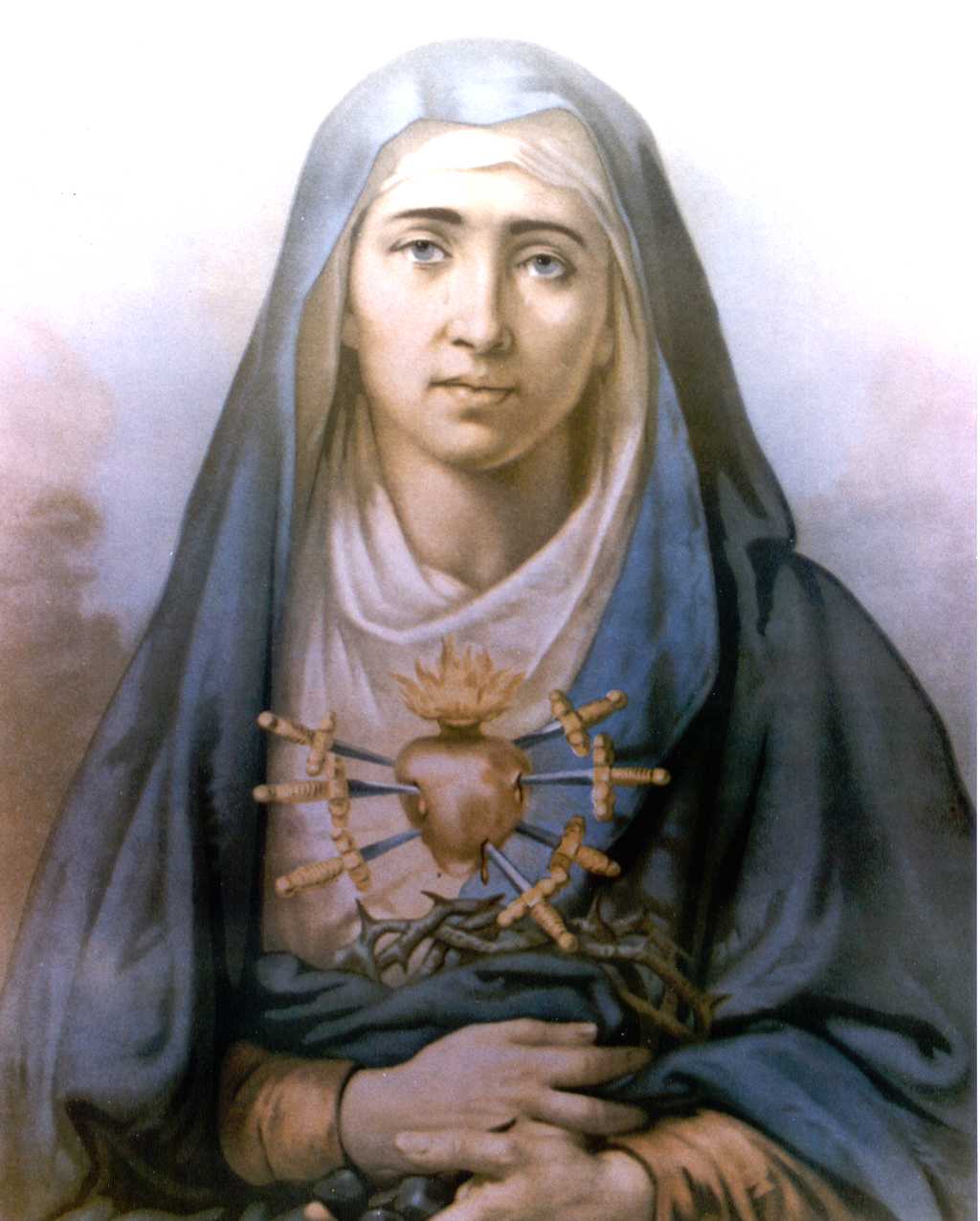Let us return to Father Vann’s refined contrasting of the sorrow of Mary compared to the women of Jerusalem. Mary’s sorrow is nurturing and strengthening: true pity. The good women of Jerusalem, followers of Jesus, become overwhelmed with emotional self-pity. Lacking definitude, without detailed understanding, Mary’s sorrow comprehends the totality of sacrificing her Son, embracing His crucifixion in silence though it pierces her heart. Always obedient, Mary questions not the mysteries of God. Her trust in God supersedes her own experiences, emotions, feelings, desires, intellect, and being. Silence, love, and a sorrowful heart she offers her Son in order to embolden and strengthen Him so He can remain loyal and obedient to the will of His Father.
If Mary’s heart had been filled with the soft sentimental pity, she would not have helped, but would have hindered. Human love helps when it is within the framework of vocation, when it expresses the will of God. A mother’s vocation is fulfilled when she offers her son to God (Hannah), to life, and to his own destiny; it is ruined when she clings to him for her own sake on the plea of saving him from hurt. “Go forth and see the king in the diadem wherewith his mother crowned him.” And this is the crowning (crucifix): her offering of her Son to the Father, her strengthening of her Son for the kingship of the cross.
For the very offering is itself a help to Him, comforting and gladdening Him. For her, the meeting (Jesus carrying the cross) can be only agony: and John and Mary Magdalen must have tried to restrain her, while she insisted, “I must be with my Son; He will have need of me.” And so she shows us a second thing: we are not merely to avoid confusing true pity with sentimental pity; we are to keep clear the distinction between true pity and self-pity. We, for our part, are not often asked to shoulder very heavy crosses perhaps, but the small ones come our way, and they fill us with self-pity; they make us yearn for and expect and perhaps demand sympathy until, in the end, we make others miserable in their turn. It is then that we should think of this scene, compare are noisy lamentations with Mary’s silence, our emotional wallowings with Mary’s strength, our wasted opportunity with the glory of the crucifixion. –Father Gerald Vann ‘Mary’s Answer for Our Troubled Times’


